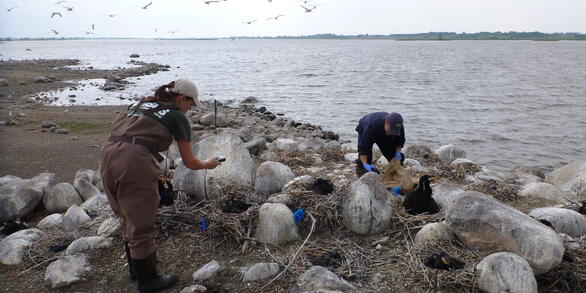National Wildlife Health Center Newsletter - Spring 2024
Stay up-to-date on our wildlife health research and activities.
Planning underway for a new NWHC Facility
Learn more about the process and how to get involved.
Wildlife Health Information Sharing Partnership event reporting system
View current and historic information on wildlife morbidity and mortality events in North America.
Expanding Distribution of Chronic Wasting Disease
Track the spread of chronic wasting disease in North America.
Pathology Case of the Month
Notable wildlife mortality cases at the NWHC are highlighted in the Pathology Case of the Month series.
National Wildlife Health Center
Welcome to the National Wildlife Health Center! Our mission is to advance wildlife health science for the benefit of animals, humans, and the environment.
Explore SCIENCE to learn more about wildlife diseases, ongoing projects, the Honolulu Field Station, and our services.
Explore WEB TOOLS to access WHISPers, wildlife health bulletins, our field manual, and more.







